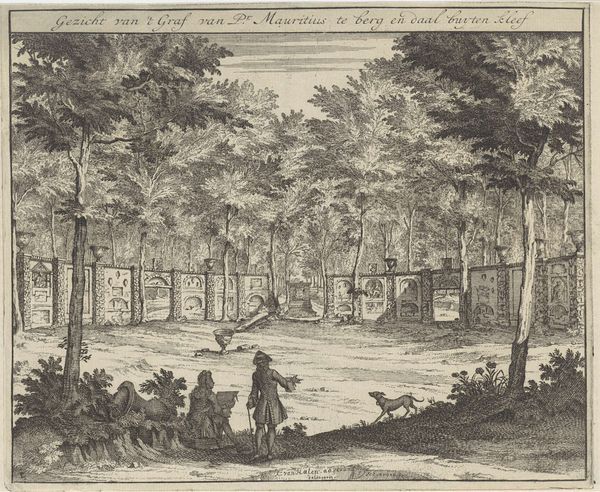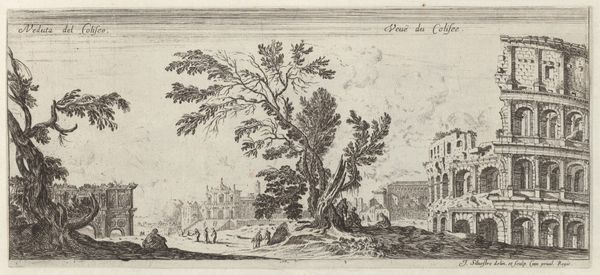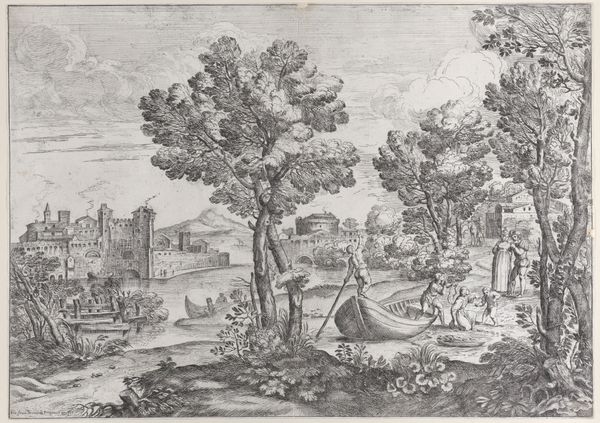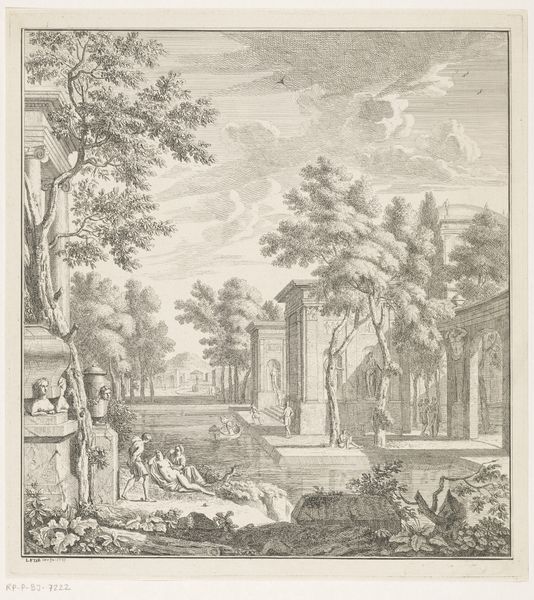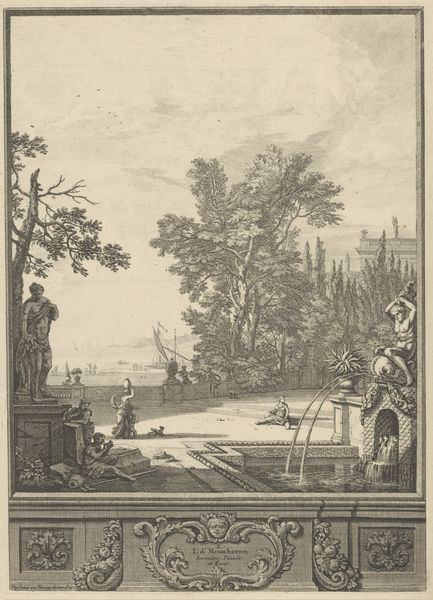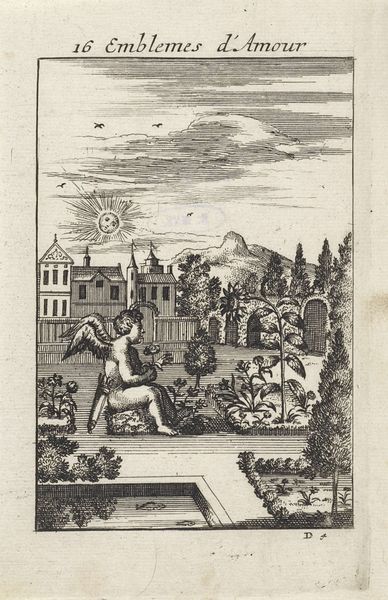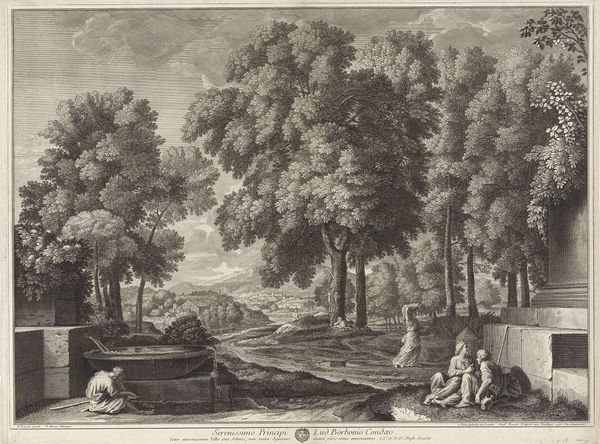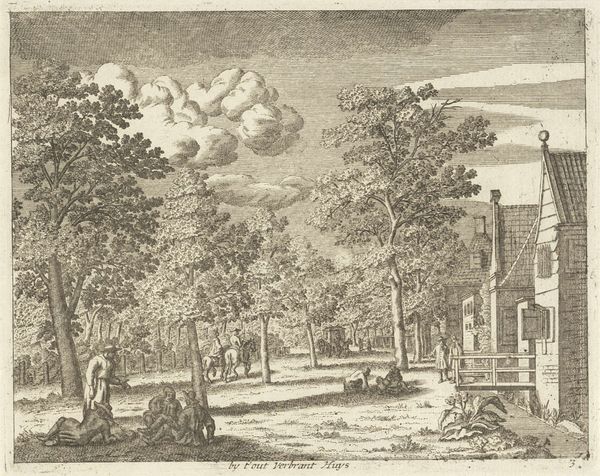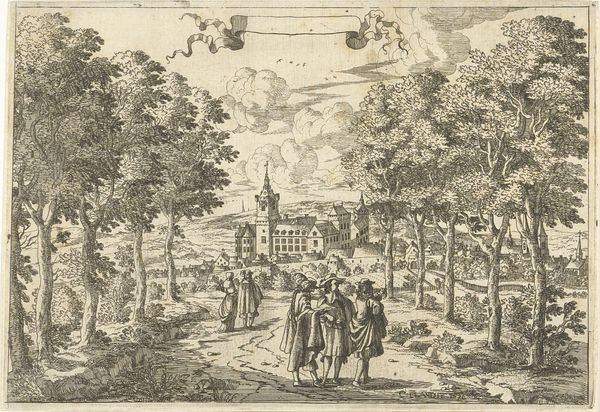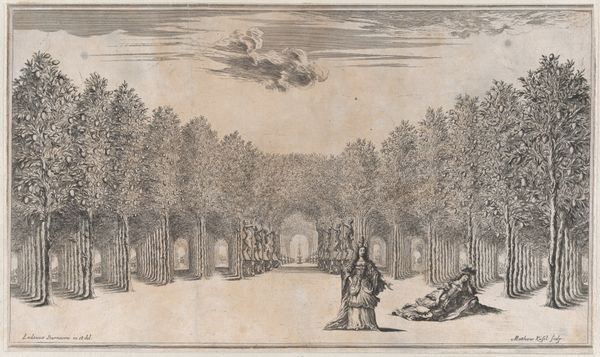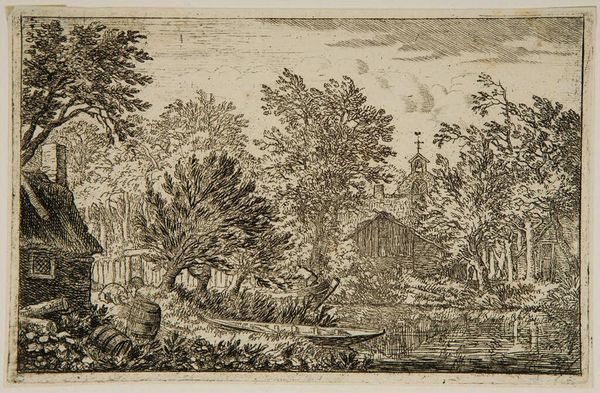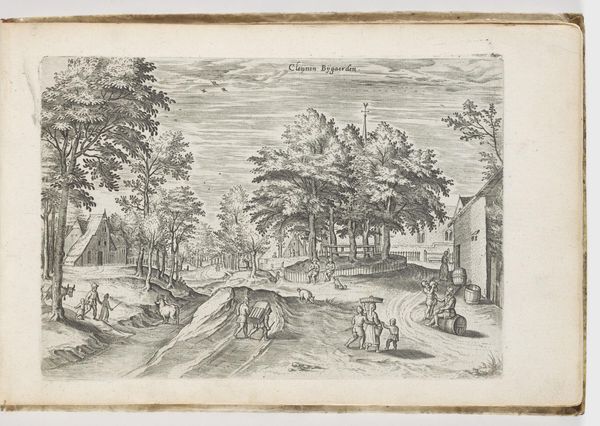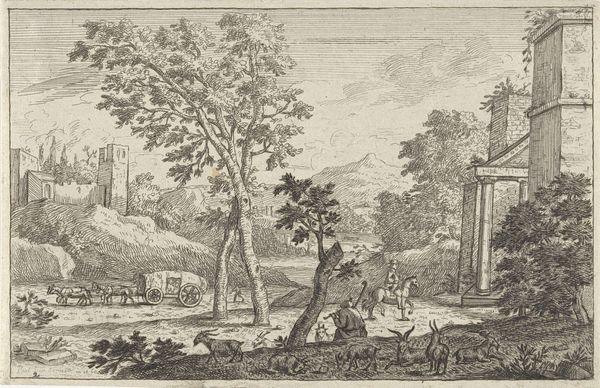
print, engraving
#
baroque
#
dutch-golden-age
# print
#
landscape
#
genre-painting
#
engraving
Dimensions: height 243 mm, width 215 mm
Copyright: Rijks Museum: Open Domain
Curator: Before us is a print entitled "Zicht op een aangelegde tuin," which roughly translates to "View of a Landscaped Garden." This engraving was created sometime between 1702 and 1767 by Jacob Folkema, a Dutch artist. It currently resides here at the Rijksmuseum. Editor: My first impression is one of formality, almost severe control. The rigid lines of the garden, the precise repetition of the trees…it suggests a society obsessed with order and power. Curator: Indeed. Note how Folkema's use of linear perspective emphasizes the artificiality of the garden. The perfectly trimmed trees, the symmetrical arrangement of the flowerbeds – all designed to impose order on nature. Look at the foreground figures: carefully placed to guide our gaze into the picture’s depths. Editor: Yet there’s also a sense of artifice in its utopian vision, right? A couple strolls leisurely. A gardener busies himself trimming. Swans glide on a pristine canal, with an imposing mansion visible in the background. This idealized vision completely masks the social realities and the intense labor needed to create and maintain this kind of space. Where are the signs of the working class responsible for producing the visible image of tranquility and perfection? Curator: A valid point. Though one might appreciate Folkema's skilled manipulation of light and shadow to create depth and texture. The engraver’s burin work gives the scene a distinctive graphic quality. Each element from the cloudy sky down to individual plant markings contribute to the image's structural harmony. Editor: What is most telling about the social dimensions is that Folkema captures only people that are members of a certain societal class, a commentary on elitism. I think, given the context of the Dutch Golden Age with its international mercantile interests and wealth, this “landscaped garden” aesthetic naturalizes certain notions of power, which might go unquestioned by its viewers. Curator: You propose some insightful notions about the socio-economic ramifications. I find myself continually captivated by the technical mastery present in this relatively small-scale artwork, and the compelling way its geometric components shape our engagement. Editor: Absolutely. It provides a window, or rather a carefully framed perspective on an epoch where dominance took the form of manicured spaces and constructed scenery.
Comments
No comments
Be the first to comment and join the conversation on the ultimate creative platform.
